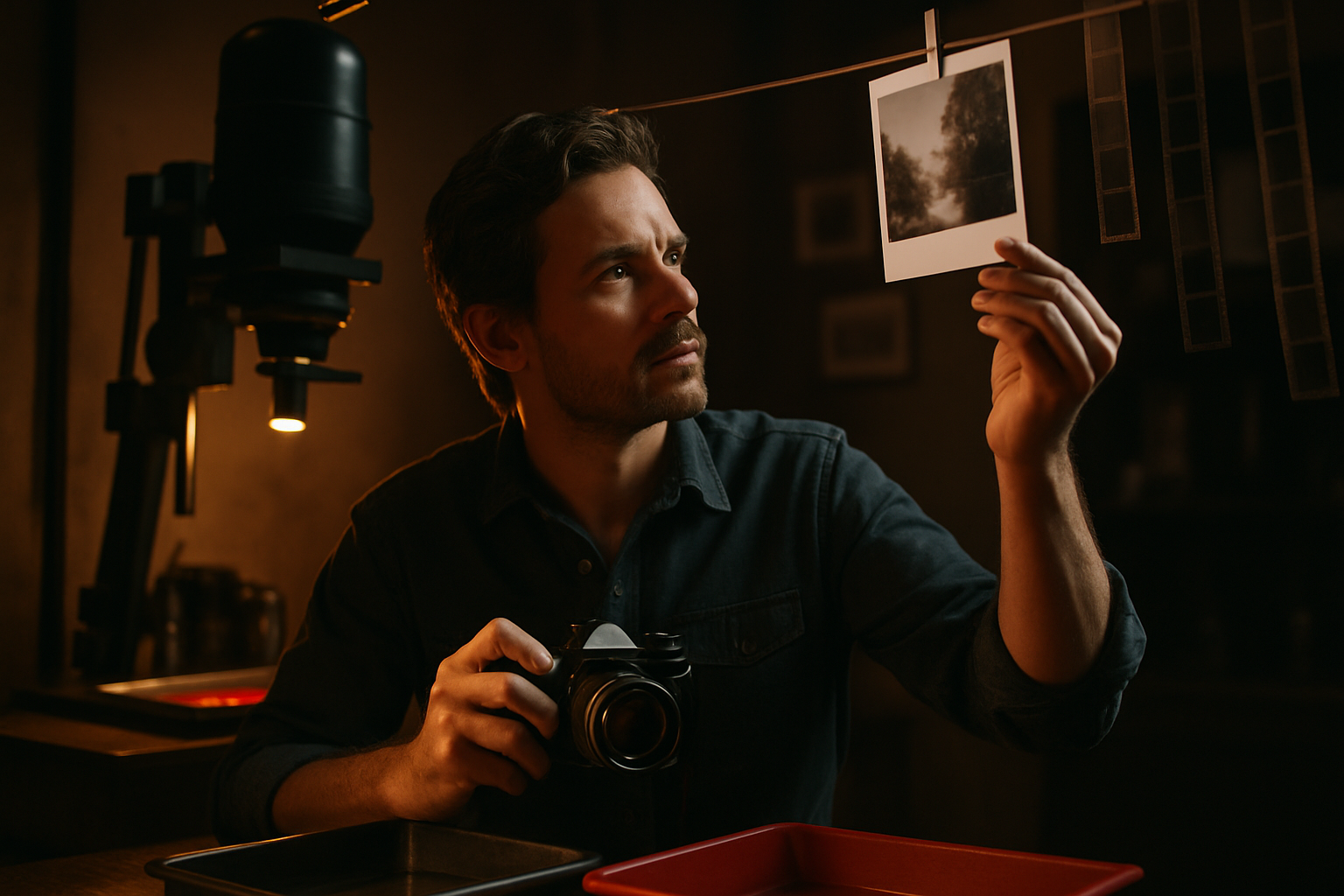The Resurgence of Analog Photography in the Digital Age
In an era dominated by digital technology, a surprising trend has emerged in the world of photography. Analog photography, once thought to be obsolete, is experiencing a remarkable revival. This resurgence has captivated both seasoned professionals and young enthusiasts, breathing new life into a medium that many had written off as a relic of the past. As we delve into this phenomenon, we'll explore the factors driving this trend, its impact on the art world, and what it means for the future of photography.

A Return to Craft
For many photographers, the return to analog methods represents a reconnection with the craft of image-making. The deliberate process of loading film, manually adjusting settings, and developing prints in a darkroom forces practitioners to slow down and consider each shot carefully. This mindful approach stands in stark contrast to the rapid-fire shooting often associated with digital photography, encouraging a more thoughtful and intentional creative process.
The Aesthetic Appeal
The unique visual qualities of film have become increasingly sought after in an age of digital homogeneity. From the rich, warm tones of color film to the dramatic contrasts of black and white, analog photography offers a distinct aesthetic that many find impossible to replicate digitally. This has led to a resurgence in the use of film in fashion, fine art, and even commercial photography, as creatives seek to stand out in a visually saturated world.
Educational Renaissance
Photography schools and workshops have seen a renewed interest in analog techniques. Many institutions are reintroducing or expanding their film photography curricula, recognizing the value of understanding these foundational processes. This educational shift is not just about preserving historical methods; it’s about fostering a deeper understanding of light, composition, and the physical properties of image-making that can inform and enhance digital practice as well.
The Collector’s Market
As with many retro technologies, the resurgence of analog photography has fueled a booming collector’s market. Vintage cameras, once gathering dust in attics, are now highly sought-after items. Iconic models like the Leica M series or the Hasselblad 500C are fetching premium prices, while more affordable options like the Canon AE-1 or Pentax K1000 are introducing a new generation to the joys of film photography. This trend has not only revitalized the second-hand market but has also spurred the production of new film cameras and accessories.
Environmental Considerations
Interestingly, the analog revival has coincided with growing environmental awareness. While film photography involves chemicals and physical materials, many argue that it can be more sustainable than the constant upgrade cycle and e-waste associated with digital photography. The longevity of analog equipment and the archival nature of physical prints are seen as advantages in an age of planned obsolescence and data vulnerability.
Bridging Generations
The resurgence of analog photography has created a unique bridge between generations of photographers. Seasoned professionals who cut their teeth on film are finding new audiences eager to learn from their expertise, while younger photographers are bringing fresh perspectives to traditional techniques. This intergenerational exchange is fostering a rich dialogue about the past, present, and future of the medium.
The Digital-Analog Hybrid
Perhaps the most intriguing aspect of this revival is the emergence of hybrid workflows that combine the best of both worlds. Many photographers are shooting on film but scanning their negatives for digital editing and distribution. This approach allows for the aesthetic and tactile benefits of analog while leveraging the convenience and reach of digital platforms. It’s a synthesis that points to a future where the boundaries between analog and digital continue to blur.
Looking Ahead
As we look to the future, it’s clear that the resurgence of analog photography is more than just a fleeting trend. It represents a fundamental shift in how we think about image-making in the digital age. While digital technology will undoubtedly continue to dominate the mainstream, analog methods have carved out a significant niche that shows no signs of disappearing. The ongoing dialogue between these two approaches promises to enrich the world of photography for years to come, ensuring that the art form remains as vibrant and diverse as ever.





